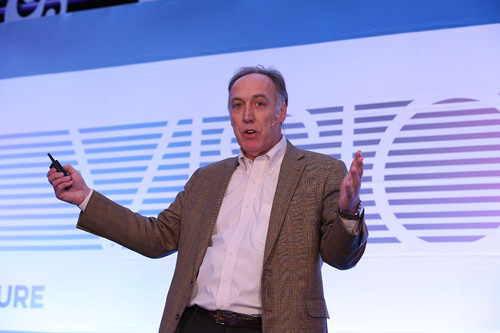MIAMI BEACH, Fla. – America’s shifting demographics, the growth of telework, community design and the coming wave of autonomous vehicles are ripe to bringing significant transformation to the convenience and fuel retailing industry. John Martin, CEO and cofounder of GenerationsMatter, shared with NACS Leadership Forum participants this week the “why” behind these changes, and outlined the opportunities for convenience retailers and suppliers by planning now for a very different future.
Martin cited nine major shifts that will impact the c-store industry:
- Population growth: The population will grow from 323 million to 358 million by 2030.
- Population concentration: An increase in urban living will be a trend.
- Diversity explodes. By 2040, the minority will become the majority, including the U.S. Hispanic population doubling by 2050.
- Age shift: In 2016, 28% of people in the U.S. live alone and are concentrated in big cities or metro areas.
- Technology: Americans are shopping more online (Amazon, Walmart.com), and shopping malls are dying. This is leading to fewer spontaneous shopping trips.
- Future of work: By 2020, half of the U.S. workforce will telecommute to a shared workspace or work from home.
- Personal mobility. The rise of bike sharing, car sharing and Uber means a near-future reduction in personal vehicle use and fueling needs. “Driverless cars are a game changer,” Martin said, adding that this will lead to a reduction in impulse convenience.
- Personal health and wellness: With an older population facing health issues, the evolution of c-stores offering more healthy options is a great way to attract this demographic.
- Growth of purpose: It’s your “why”—the reason c-stores exist. What once was private is now very public, and there’s actually distrust in companies or people who keep things private.
To capitalize on these and other trends requires a “new lens on the future,” one that embraces the boomers, Gen Xers and the millennial. Here’re a few thoughts about each age group:
- Boomers: Their Influencers are TV, the Vietnam War, rock n’ roll, growth of suburbia, women’s lib, the race for space (NASA) and civil rights. They have a sense of entitlement, as they invented the 60-hour work week and live to work. They’re also self-centered and redefining what it means to belong. For the most part, they want to age in place, meaning they want to be in a 15-minute livable community.
- Generation X, also known as the most unsupervised generation in history. They are the latch-key kids, and their influencers are the Challenger disaster, single parents, MTV/cable TV, Ronald Reagan, PCs and Macs, and the end of the Cold War. They’re very technology savvy, globally minded and pragmatic. They are independent, task-driven and skeptical. In the workplace, they’re self-directed and computer literate, flexible and productive. They don’t want to be micromanaged and they don’t want to micromanage others. Unlike the Boomers, Gen Xers work to live. They value family and want to be in neighborhoods that are kid-centric and within a 15-minute livable community.
- Millennials may seem like they’re focused on self, but they’re bringing the rest of us along. This generation’s influencers are September 11, Clinton/Bush, the recession, wars in the Middle East, parenting, Columbine, technology, social media and diversity. Martin cited two internal forces that have inoculated millennials:
- How they were raised: Their boomer parents recorded every minute of their kids’ childhood and told them they were special, and they received awards just for participating.
- How they are wired: Millennials are digital natives. They share experiences and even believe they aren’t having an experience unless it can be shared.
For millennials, everyone is special and everyone has value. Boomers and Gen Xers may think that millennials are me-focused, but they’re we-focused. This generation wants to live in hyperconnected communities, and their ambition could save us.
So, while each generation is different, there is one commonality: they all want to belong. “How do we define (understand) what it means to belong in the c-store world?” Martin asked, adding that part of belonging is not being left behind.
As for the future of c-stores, Martin suggested to Leadership Forum participants that they start by asking the right question and use design thinking to determine how they can be at the center of a 15-minute community where each generation feels that they belong. For boomers, it could be about design tweaks that help them navigate the store. For Gen Xers, it’s services that make life easier for them and their families, like meal kits and Amazon lockers. For millennials, it’s all about purpose. After all, this demographic will comprise 44% of the workforce by 2025.
